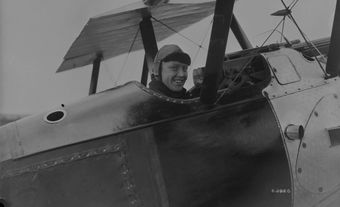Jean-Paul-Armand Mousseau
Jean-Paul-Armand Mousseau, artist (b at Montréal 1 Jan 1927; d at Montréal 7 Feb 1991). Mousseau studied at the Collège Notre-Dame (1940-45), where he frequented the studio of Frère Jérôme. In 1946 he joined Paul-Émile BORDUAS and 5 young artists in the first AUTOMATISTE group exhibition (Montréal), and in 1948 was one of 16 to sign the REFUS GLOBAL. By the late 1940s his paintings and works on paper were consistently abstract and, in a development shared with members of the PLASTICIEN group, became more geometrically structured beginning in the 1950s.
He embraced the Automatiste concern with the social role of art, but in a more thoroughly pragmatic way than his colleagues; in addition to his work on canvas and paper he designed sculpture, jewellery, painted fabrics, posters and stained glass windows, began to work as a theatre designer (sets, costumes and lighting) in the 50s, and became noted for his multimedia approach to creating thematic discotheque "environments" in the 1960s. Among his public murals is one created in 1961-62 for Hydro-Québec (Montréal), where he used such nontraditional media as fibreglass, plastic resin and neon lighting, Mousseau being one of the most daring exploiters of new media and techniques during the 1960s. His interest in multimedia work included collaborating with architects, and his courses at the École des beaux-arts de Montréal (1961-64) and Université Laval (1968) explored the integration of colours, textures, lighting and unusual materials into architecture. He was given a major, posthumous retrospective exhibition at the Musée d'art contemporain (Montréal) in 1997.

 Share on Facebook
Share on Facebook Share on X
Share on X Share by Email
Share by Email Share on Google Classroom
Share on Google Classroom



